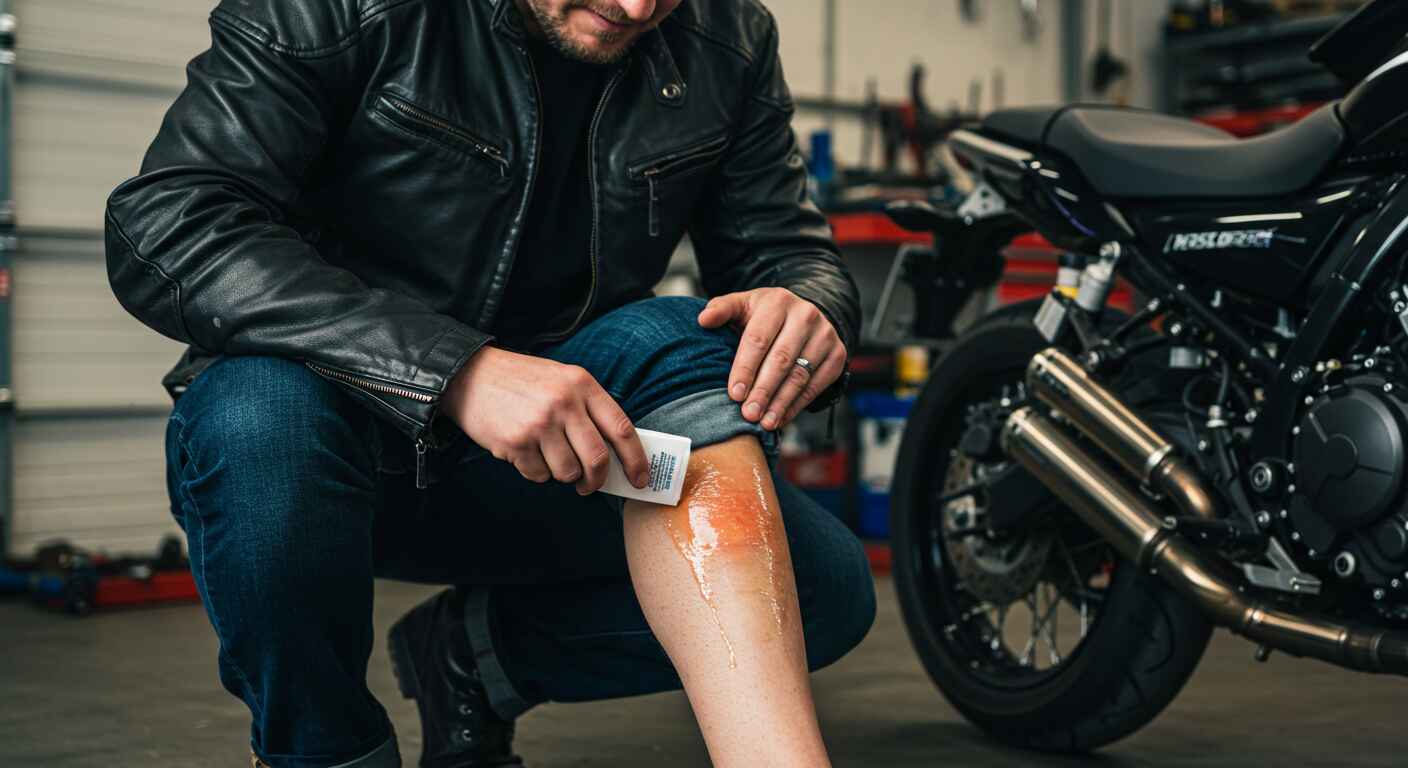
Burns and heat injuries from exhaust pipes are common among motorcyclists. Knowing how to manage burns from exhaust pipes properly is crucial for reducing pain and preventing complications. This guide will provide essential first aid tips on how to manage burns from exhaust pipes and ensure proper treatment and care.
Understanding Burns and Heat Injuries
Types of Burns
Burns are classified into three categories based on their severity:
- First-Degree Burns: These are superficial burns affecting only the outer layer of the skin. Symptoms include redness, pain, and minor swelling.
- Second-Degree Burns: These burns affect both the outer and underlying layers of skin, causing redness, pain, swelling, and blistering.
- Third-Degree Burns: These are severe burns that penetrate deep into the skin, affecting deeper tissues. The skin may appear white, charred, or leathery, and there may be numbness due to nerve damage.
Immediate Steps to Manage Burns from Exhaust Pipes
Cool the Burn
- Remove Heat Source: Immediately move away from the exhaust pipe to prevent further injury.
- Cool the Burn: Use cool (not cold) running water to cool the burn for at least 10-20 minutes. This helps to reduce pain and swelling.
Clean the Burn
- Wash Hands: Before touching the burn, wash your hands to prevent infection.
- Gently Clean the Area: Use mild soap and water to clean the burn gently. Avoid scrubbing the area.
Protect the Burn
- Apply Burn Gel: Use a burn gel or aloe vera to soothe the burn and provide relief.
- Cover with a Sterile Dressing: Protect the burn with a sterile, non-stick dressing or a clean cloth. Avoid using cotton wool or adhesive bandages directly on the burn.
First Aid Tips to Manage Burns from Exhaust Pipes
Avoid Breaking Blisters
If blisters form, do not break them. Blisters protect the underlying skin and reduce the risk of infection. If a blister breaks on its own, clean the area gently and apply an antibiotic ointment.
Pain Relief
Over-the-counter pain relievers such as ibuprofen or acetaminophen can help manage pain and reduce inflammation. Follow the dosage instructions on the packaging.
Hydration
Drink plenty of fluids to stay hydrated. Burns can cause fluid loss, so maintaining hydration is essential for recovery.
When to Seek Medical Attention for Burns
Severe Burns
Seek immediate medical attention if you experience:
- Burns covering a large area of the body.
- Burns on the face, hands, feet, groin, or major joints.
- Third-degree burns or burns that penetrate deep into the skin.
- Signs of infection, such as increased pain, redness, swelling, or pus.
Persistent Symptoms
If pain, swelling, or redness persists or worsens despite home treatment, consult a healthcare professional.
Preventing Burns from Exhaust Pipes
Use Protective Gear
Wearing appropriate protective gear can significantly reduce the risk of burns. Always wear long pants, boots, and gloves while riding to protect your skin from hot surfaces.
Be Cautious Around Hot Surfaces
After riding, be aware of hot exhaust pipes and engine parts. Avoid touching these areas until they have cooled down completely.
Install Heat Shields
Consider installing heat shields on your bike to cover the exhaust pipes and other hot surfaces. Heat shields can help prevent accidental contact and reduce the risk of burns.
Conclusion
Managing burns and heat injuries from exhaust pipes effectively requires prompt action and proper first aid techniques. By cooling the burn, cleaning and protecting the area, and knowing when to seek medical attention, you can reduce pain and promote healing. Remember to wear protective gear and take precautions to avoid burns while riding. Stay safe on the road with these essential tips on how to manage burns from exhaust pipes.
Explore our CE-certified motorbike gloves for top-notch protection and quality. Stay safe and enjoy the ride!
